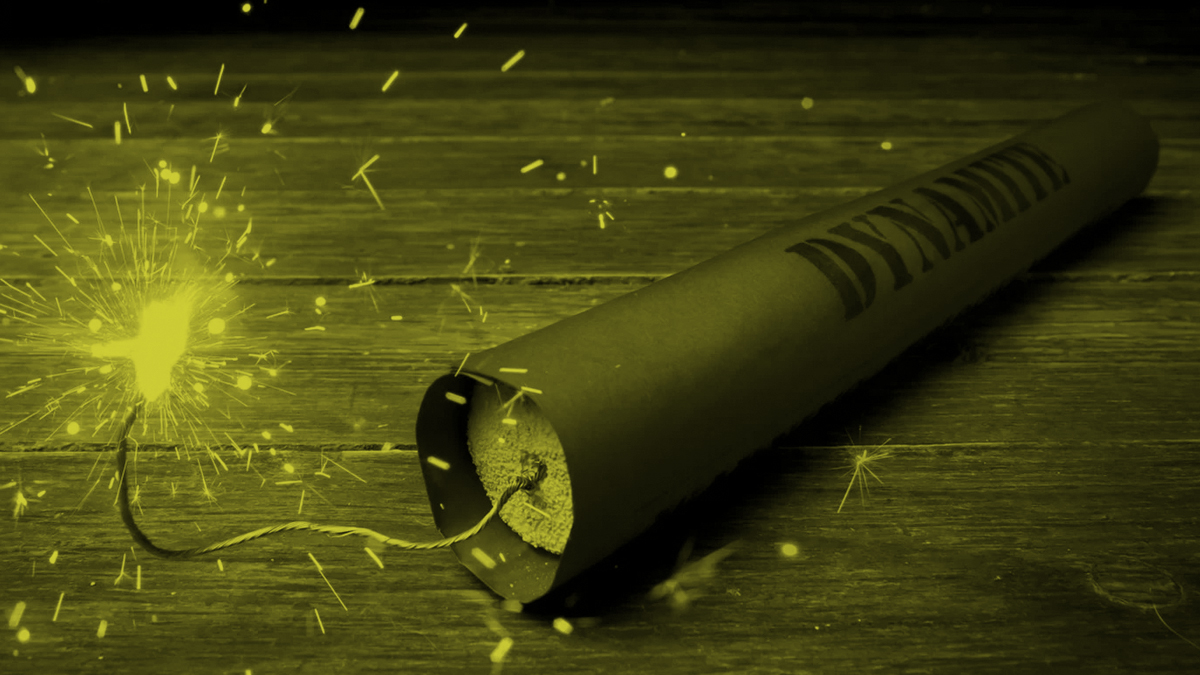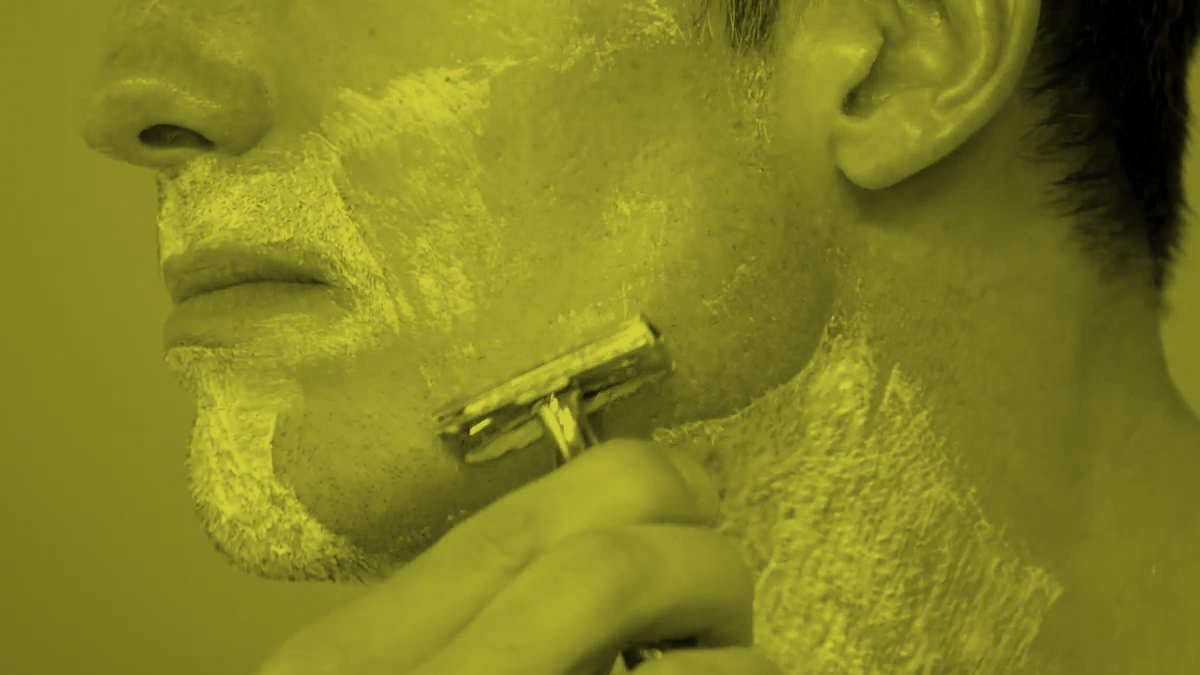Out of Orbit: A Brand Named Desire
Some say Orbit cinnamon was the best gum ever invented. But now it’s gone. It’s a brilliant case study in how scarcity is a key motivator in triggering desire.
My wife Beth loves Orbit cinnamon gum. Or I should say, she loved Orbit cinnamon gum. Because Orbit cinnamon has been discontinued.
Beth is unhappy about that. If you could heard her tell it, Orbit was the best cinnamon gum that had ever been invented.
To be truthful, Orbit cinnamon is available. It’s just not available in stores. You can still buy it online. On eBay. But it’s not $1.49 like it used to be. It costs $83.00. A pack. Or just under $6.00 a stick. And that’s for sticks that are 6 months past their “use by” date.
Scarcity is a strong motivator in triggering desire. Countless website sales pages use countdown timers. “Only 12 hours before the price goes up”. In-stock numbers work, too. “Only 2 left!” You can almost hear the mouses clicking.
Wrigley, the makers of Orbit, are missing out on every marketers dream. When the pent-up desire for your product has reached the level that a single stick of gum costs $6.00, you do two things. You tell the world the story about the lengths people are going to get the best cinnamon gum ever invented, the gum that only you make.
And then you start selling it again.
Don't Be Dr. Dynamite
If you could capture the single most important quality that creates a successful brand, it boils down to differentiation.
A few years ago I was working on private-label food brands for big grocery retailers. I called it “big brand surfing”. That’s when you design products with names, colors, fonts and packaging that sound, look and feel remarkably similar to a major brand.
Think Dr. Pepper vs. Safeway’s Dr. Dynamite. Generally, the play is about price. But what they are really trading on is similarity. They try to look the same. They try to taste the same. You can sell a lot of stuff that way, but you are just surfing another brand’s wave. Success breeds clones.
Personal brands fall victim to this, too. On Instagram, social media star wannabes are increasingly adopting a popular, yet homogenized expression of beauty and now no one can tell them apart.
If you could capture the single most important quality that creates a successful brand, it boils down to differentiation.
Have you looked at your competition lately? How can you separate yourself from the pack? Aspire to a unique expression of your brand.
Surf your own wave.
The Wipe Out
As entrepreneurs and creative professionals we may start a project, a product, a business that gets wiped out. Clients lost. Customers vanish. What happens next?
When I was in art school, I had a drawing instructor who had this one exercise that I never forgot. He would instruct you to draw a model for 90 minutes in soft charcoal. You would work slavishly, perfecting every curve and shadow. Then when time was up, he’d say “OK, take your chamois cloth and wipe it all out”.
Some students would gasp, others were incredulous. But I’ll lose all my work!
Once the drawings were erased he said, “OK, now you have three minutes to draw the entire thing again.”
Inevitably, the resulting drawings would be amazing. More full of life than the over-worked 90 minute versions. Why? Because we hadn’t really wiped out the drawing. The previous 90 minutes was visually engrained and in our muscle memory.
As entrepreneurs and creative professionals we may start a project, a product, a business that gets wiped out. Clients lost. Customers vanish. But what we have to remember is that the work we put in, the brain power we invested isn’t gone. It is in our muscle memory, ready to be released, full of life. Refined. Essential. The next one will be amazing.
photo: Shalom Jacobovitz
A Smell That Will Make You Money
Scientists have proven you are 100 times more likely to remember something that you smell than something that you see, hear or touch.Now brands are increasingly putting the power of scent to work.
Last week I was cooking a recipe that called for coconut oil. When I opened the jar I was immediately transported to being 16 years old on a beach in Michigan putting on suntan lotion. I almost got smell memory whiplash.
Smells are processed by the amygdala, the part of the brain responsible for memory functions and processing emotions. Scientists have proven you are 100 times more likely to remember something that you smell than something that you see, hear or touch.
Now brands are increasingly putting the power of scent to work.
In Orlando, a company recently projected "waffle cone" smell adjacent to an ice cream parlor, driving a 50% sales increase. REI used the smell of “campfire and pine” and guess who started selling more backpacks? Don’t even get me started about what Cinnabon does. You know what they do.
Do you have a service or product that you can enhance with a scent? If you do, you might be closer to smelling success.
Schrödinger's Cookie
Marketing folks know that any time you create a line extension, one consideration is whether or not it will cannibalize your mainline product. However, the greatest worry is always: “Will it degrade the brand?”.
Pop quiz. When I say these flavors, what do you think of? Biscuits and Gravy, Greek Gyro, BLT, Cappucino and NY Reuben. Well, I’ll tell you what I don’t think of. Lay’s Potato Chips. But that’s what they are. The result of Lay’s “Do Us Flavor” campaign of limited-edition chips.
OK, let’s try again. Jelly Donut, Mississippi Mud Pie, Raspberry Danish, English Breakfast Tea and, wait for it…Swedish Fish. Give up? Oreos.
Marketing folks know that any time you create a line extension, one consideration is whether or not it will cannibalize your mainline product. However, the greatest worry is always: “Will it degrade the brand?”.
New flavors can breathe life and excitement into somewhat boring consumer staples. Happily, they give their social media teams something to tweet about. But they beg the existential question: When does an Oreo become not an Oreo? When does it become a parody of itself?
Experimentation and innovation energize and revitalize brands. But care should be taken that we don’t try too hard to fix something that isn’t broken. I mean, yesterday I walked by Pumpkin Spice Twinkies in the store. Is nothing sacred?
A Close Shave
Blind loyalty to a brand can come back to bite you. I’ve known I’ve been getting ripped off for a while. But I just never did anything about it. Now I feel violated.
The viral video from Dollar Shave Club came out 5 years ago, so I’ve known I’ve been getting ripped off for a while. I just never did anything about it.
Gillette had me hypnotized into thinking that ever-increasing blade counts and handles with more foils than a Lamborghini translated to a shave only their product could achieve. Call me a slow learner, but I didn’t realize the extent of my stupor until Saturday.
That's when I walked into CVS to get cartridges for my aging Trac II razor. $32.99 for ten cartridges. No handle mind you, just bits of plastic with two blades at $3.29 each. I felt violated. My brand loyalty and my perception of quality got nicked by reality and I needed a styptic pencil.
A few days later, my new steel safety razor and 100 single-edge blades (at 5 cents each) arrived from Amazon. Wouldn’t you know it, with a little practice the shave I got from a 5 cent razor was just as close - and as a bonus, the luxurious feeling of the weighty steel handle was intensely satisfying.
Don’t get me wrong, I value quality, design, performance and technology. When you deliver them to me consistently I am the most devoted of brand evangelists. But when a brand begins to take advantage of that devotion, delivering the same results at a 6400% premium and are banking that I won’t notice (and I didn’t), let’s say I felt double razor burned.
How are you honestly earning your customers and clients devotion?
Just Keep Swimming
The athletic marketplace is looking a lot like a reef these days. With the imminent demise of traditional sporting goods retailer Sports Authority, there is blood in the water.
I was scuba diving in St. Croix a couple of weeks ago. Lionfish are an invasive species in the Caribbean and they are eating all the other fish - absolutely decimating reef populations. They’re evil. So whenever you go diving these days you take a speargun. Because while you’re out having diving fun, you are also always hunting lionfish.
When you spear a lionfish, sharks, who can smell a single drop of blood in an olympic-sized pool pick up the electric impulses and soon show up hoping for a free meal. So you have to keep your eyes open. Because when sharks arrive after hearing a dinner bell, they are let’s just say, frisky.
The athletic marketplace is looking a lot like a reef these days. With the imminent demise of traditional sporting goods retailer Sports Authority, there is blood in the water. Athleisure brands like Under Armour, REI, Athleta and Sweaty Betty are circling, taking advantage of the opportunity and snapping up new customers as lifestyles and tastes change.
It’s survival of the fittest. Design and strategic branding are powerful assets for customer acquisition, but so is just paying attention when someone else is getting speared.
photo credit: lionfish: keywestaquarium.com
A Better Mousetrap
Peanut butter is the ticket with mice. The trick is to put the trap out without setting it and let them get used to eating from it. Then one day you set it. Brands do the same thing with us.
My next door neighbor has mice. It was a cold winter here in the Northeast and I guess their basement was a little more cozy than the woodpile outside. Their cat, historically a great mouser, has been slacking. It's not healthy to have mice around when you have kids, so they had to set some traps.
Peanut butter is the ticket with mice. The trick is to put the trap out without setting it and let them get used to eating from it. Then one day you set it.
Brands do the same thing with us. Nestle is doing it with their chocolate. We like Nestle's chocolate. We've gotten used to eating it.
So when Nestle announced that they’re going to cut the sugar in their chocolate, they set the trap.
We all know eating less sugar is a good idea. We’ve been packing away a little too much of it for the last few decades. So Nestle is betting that if we know there is less sugar in their chocolate, we will feel better about buying and eating more of it.
Some of us may be smarter, or have more willpower than that. But this mouse likes the cozy warmth of the idea of more chocolate. More chocolate is always better. Snap.
Let's Co-Everything
The cost and risk of opening a retail presence has always been a significant barrier for brands just getting started. You used to have to go it alone. But now you don’t have to.
From co-working to bike-sharing to millennials co-habitating with their parents, it looks like owning something yourself is just getting too hard.
Going it alone in retail is hard, too. Just ask American Apparel. One of the fastest growing US companies only a decade ago, they are now closing their doors. They hadn’t made a profit since 2009.
The cost and risk of opening a retail presence has always been a significant barrier for brands just getting started. You used to have to go it alone. But now you don’t have to.
There is a co-retailing startup called Bulletin. It helps smaller brands merchandise their products without having to have a brick and mortar store of their own. They divide up a single retail location into smaller sections, from a shelf to half a store, that you can rent month-to-month. It’s brilliant and is smashing the barrier to entry into physical retail.
The new co-economy is giving rise to this kind of innovation every day. Is there a barrier to entry that is standing in the way of you growing your business or creative practice? Take a step back and ask, “How can I co-it?”
photo credit: Sebastien Wiertz @flickr.com
You Both Win
The more distant our daily business transactions become, the more we need to reach out and touch people on a personal level.
I opened a business checking account about 4 months ago at Wells Fargo. It took about half an hour. In and out, no big deal.
So when I walked into the branch last week for the first time since I opened my account, I was shocked when I was greeted at the door by name. “Hi Mr. VanDusen, great to see you today. What can we do for you?[smile]”
To say I was shocked is an understatement. Whether or not this guy had some special memory gift or not doesn’t really matter. What did matter is that I suddenly felt like I mattered to them. Sure, Wells Fargo could be doing damage control for their recent transgressions, but in that moment, I forgot all that. Because they recognized me. I wasn’t just an account number. They knew my name.
The more distant our daily business transactions become, the more we need to reach out and touch people on a personal level. Because if you can figure out how to make people feel like they matter, then you both win.
photo credit: Crystian Cruz @ flickr.com
Our Brand Is Crisis
Brands that are built on celebrity rise and fall on the actions of the ambassador’s associations. When that persons name becomes synonymous with a chaotic and negative narrative, is it any wonder the brand is damaged?
A friend of mine works at Nordstrom in design. She posted on Facebook that she and her co-workers received an email from the three Nordstrom brothers condemning the Muslim ban. In it they reiterated their “values of diversity, inclusion, respect and kindness” to their employees of which “thousands…are first and second generation immigrants”. A buoyant and positive brand narrative.
Days later (in a ‘totally unrelated move’) Nordstrom dropped the Ivanka Trump line. The POTUS sent out a condemning tweet. Kellyanne Conway went on FOX News asking the viewers to buy her boss’s daughter’s products. Federal laws were possibly broken. Apologies were made. Then rescinded. Pretty much a PR disaster.
After taking a slight hit as a result of the tweet, Nordstrom’s stock price did something interesting. It went up. A lot. So did sales. It seems that valuing and protecting the people that work for you is good for business.
Brands that are built on celebrity rise and fall on the actions of the ambassador’s associations. When that persons name becomes synonymous with a chaotic and negative narrative, is it any wonder the brand is damaged?
photo credit: Grégoire Lannoy @flickr.com






















